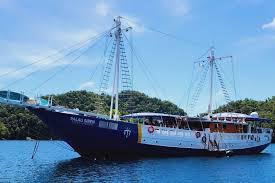
Introduction
Palau, a small archipelago in the western Pacific Ocean, is rapidly gaining attention as a prime destination for eco-tourism and adventure seekers. With its biodiverse marine ecosystems, unique cultural heritage, and commitment to sustainable practices, Palau’s relevance extends beyond its picturesque landscapes. As global awareness about environmental conservation grows, Palau stands as a model for other nations, combining tourism with environmental responsibility.
Understanding Palau’s Ecological Significance
Palau is made up of more than 500 islands, and is renowned for its breathtaking coral reefs and rich marine life, including species such as manta rays and sea turtles. The Palau National Marine Sanctuary, established in 2015, protects approximately 80% of the nation’s waters, preserving crucial habitats and promoting biodiversity. This initiative not only safeguards the environment but also enhances sustainable fishing practices, ensuring local communities benefit economically from their natural resources.
Cultural Insights and Local Communities
In addition to its natural wonders, Palau boasts a rich cultural tapestry. The Palauan people have a deep-rooted connection to their land and sea, which is showcased through traditional practices and storytelling. Visitors can engage with local artisans, experience traditional dance, and explore historical sites like the ancient stone monoliths of Ngarchelong. The Palauan government actively encourages cultural preservation as a vital aspect of national identity, attracting tourists who value authentic experiences.
Recent Developments and Future Directions
This year, Palau has taken significant steps to further bolster its tourism industry while maintaining its commitment to sustainability. The introduction of new eco-friendly travel programs and partnerships with conservation organizations highlights Palau’s ambition to offer responsible tourism options. Furthermore, the recent easing of travel restrictions post-COVID-19 is expected to bring a surge in visitors eager to explore its pristine environment.
Conclusion
As Palau embraces a future where conservation and tourism walk hand in hand, it presents an inspiring blueprint for sustainable development. For travelers, the allure of Palau lies not just in its stunning vistas, but also in its responsible approach to tourism and preservation of culture. With ongoing efforts to protect its environment and enhance the visitor experience, Palau is poised to become a leading example of how nations can thrive while honoring their ecological and cultural heritage.






